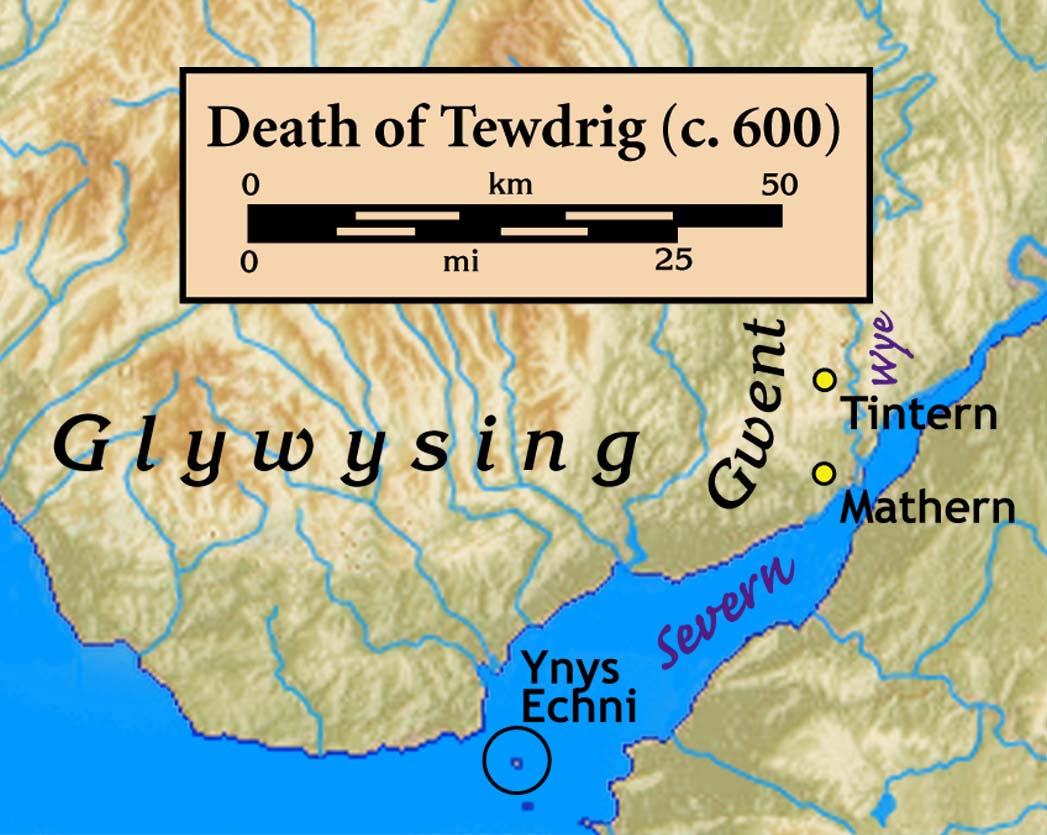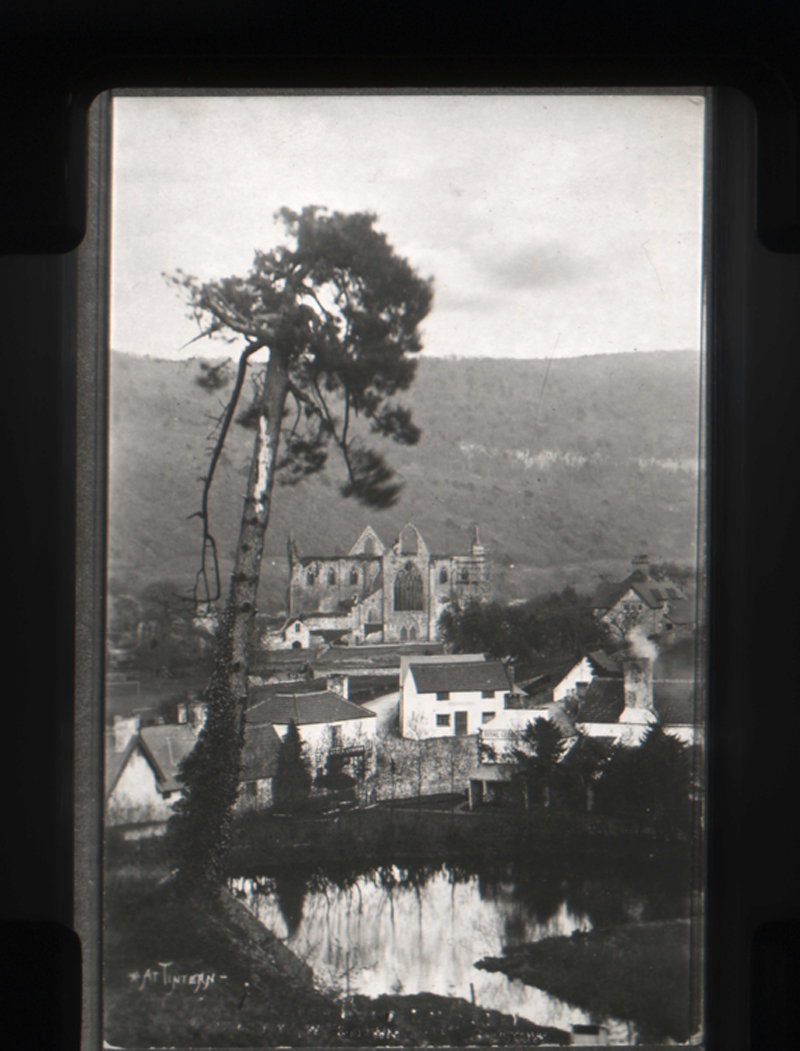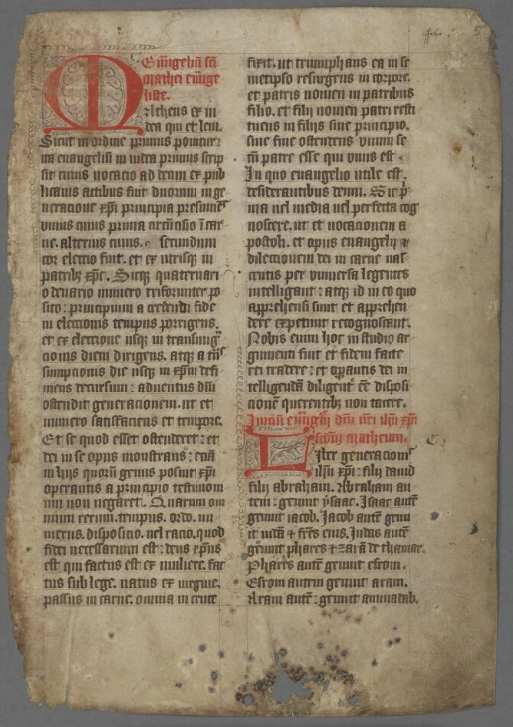|
Mathern
Mathern ( cy, Matharn; older form: ''Merthyr Tewdrig'') is a historic community (parish) and village in Monmouthshire, south east Wales, about south west of the town of Chepstow, close to the Severn estuary, the Bristol Channel and the M48 motorway. The village is designated as a Conservation Area. It is now bisected by the motorway, which passes over the road through the village, with the original village located to the south and the more recent development, known as Newton Green, to the north. Almost adjoining Mathen, and within the community, is Pwllmeyric. Origins of the village An authoritative local history suggests that the settlement originates from a time when the St. Pierre Pill, an inlet off the Severn Estuary, was larger and much more important than now, and met an ancient ridgeway which passed through Shirenewton towards Monmouth. The inlet was originally known as ''Porthiscoed'' ("harbour below the woods"), which, as Portskewett, later became the name of a n ... [...More Info...] [...Related Items...] OR: [Wikipedia] [Google] [Baidu] |
Tewdrig
Tewdrig ap Teithfallt (; la, Theodoricus), known simply as Tewdrig, was a king of the post-Roman Kingdom of Glywysing. He abdicated in favour of his son Meurig (Maurice) and retired to live a hermitical life, but was recalled to lead his son's army against an intruding Saxon force. He won the battle, but was mortally wounded. The context of the battle is one of Britons versus invading Saxons, without explicit religious overtones. Since Tewdrig held to a religious lifestyle and was killed while defending a Christian kingdom against pagans, by the standards of that day Tewdrig is considered to be a martyr and a saint. The Latin form of his name is given as 'Theodoric' and his feast day is 1 April. Tewdrig's name appears in a genealogy of Jesus College MS 20, in the line of one of his descendants, but the only substantive information about the person comes from the twelfth century ''Book of Llandaff''. The ''Book of Llandaff'' places Tewdrig's story in the territory of ... [...More Info...] [...Related Items...] OR: [Wikipedia] [Google] [Baidu] |
Pwllmeyric
Pwllmeyric (Welsh: Pwllmeurig) is a small village in Monmouthshire, Wales, located 1 mile south west of Chepstow, on the A48 road within the parish of Mathern. The name Pwllmeyric means, in Welsh, "Meurig's pool" and refers to the ''pwll'' or creek of the Severn estuary which, before it silted up, linked the village to the sea. It was named for Meurig ap Tewdrig, king of the early Welsh kingdoms of Gwent and Glywysing in the 5th or 6th century, who buried his father Tewdrig (St. Theodoric) at Mathern. The village is the presumed birthplace of Wales international footballer Eddie Parris,Eddie Parris and the childhood home of musician |
Tintern
Tintern ( cy, Tyndyrn) is a village in the community of Wye Valley, on the west bank of the River Wye in Monmouthshire, Wales, close to the border with England, about north of Chepstow. It is popular with tourists, in particular for the scenery and the ruined Tintern Abbey. Modern Tintern has been formed through the coalescence of two historic villages; Tintern Parva, forming the northern end of the village, and Chapel Hill, which forms the southern end. The village is designated as a Conservation Area. In 2022 the community was renamed from "Tintern" to "Wye Valley" and had boundary changes. History Early history A ford across the navigable and tidal River Wye was in use in Roman times, close to the site of the abbey. After the Romans withdrew from Wales, the kingdom of Gwent emerged, and, according to tradition, in the 6th century one of their kings, Tewdrig, came out of retirement as a Tintern hermit to defeat the invading Saxons in battle, perhaps at a site known today as ... [...More Info...] [...Related Items...] OR: [Wikipedia] [Google] [Baidu] |
Shirenewton
Shirenewton ( cy, Drenewydd Gelli-farch) is a village and community in Monmouthshire, south east Wales. It is located 3 miles due west of Chepstow, 5 miles (8 km) by road. The village stands around 500 feet (154 m) above sea level, and has extensive views of the Severn Estuary and Bristol Channel. The population of the village and the conjoined village of Mynydd-bach was 657 in 2011. Etymology The 1901 Kelly's Directory, described the "Old Welsh name for the Parish" as "Tre-newydd-gelli-fach", and today the town's standardised Welsh Placename is ''Drenewydd Gelli-farch'' ("new town at the grove of the horse/stallion/steed"). The difference in the two names is purely grammatical, and is a common feature of Welsh morphology. As such, the name "Trenewydd Gelli Farch" appears on roadsigns leading into Shirenewton. The name of Mynydd-bach, the contiguous village north-east of Shirenewton, means "Little Mountain" in Welsh. History Before the Norman invasion of Wales, the Shi ... [...More Info...] [...Related Items...] OR: [Wikipedia] [Google] [Baidu] |
Saxons
The Saxons ( la, Saxones, german: Sachsen, ang, Seaxan, osx, Sahson, nds, Sassen, nl, Saksen) were a group of Germanic * * * * peoples whose name was given in the early Middle Ages to a large country (Old Saxony, la, Saxonia) near the North Sea coast of northern Germania, in what is now Germany. In the late Roman Empire, the name was used to refer to Germanic coastal raiders, and as a name similar to the later "Viking". Their origins are believed to be in or near the German North Sea coast where they appear later, in Carolingian times. In Merovingian times, continental Saxons had been associated with the activity and settlements on the coast of what later became Normandy. Their precise origins are uncertain, and they are sometimes described as fighting inland, coming into conflict with the Franks and Thuringians. There is possibly a single classical reference to a smaller homeland of an early Saxon tribe, but its interpretation is disputed. According to this proposal, the S ... [...More Info...] [...Related Items...] OR: [Wikipedia] [Google] [Baidu] |
Meurig Ap Tewdrig
Meurig ap Tewdrig (Latin: ''Mauricius''; English: ''Maurice'') was the son of Tewdrig (St. Tewdric), and a King of the early Welsh Kingdoms of Gwent and Glywysing. He is thought to have lived between 400AD and 600AD, but some sources give more specific dates of c.596 - c.665. Meurig took over the Gwent throne upon his father's abdication in the early 7th century. According to tradition, Tewdric became a hermit at Tintern, but later came to the assistance of Meurig, and they repelled the invading Saxons in a battle at Pont y Saeson (Bridge of the Saxons). Meurig reunited his kingdom with Ergyng (Archenfield) by marrying Onbrawst, the daughter of King Gwrgan Fawr (the Great) of that kingdom. He is said to have been a great patron of Llandaff Cathedral where he was eventually buried. He was the father of Athrwys ap Meurig who, it has been postulated, was the real King Arthur who drove out the invading Saxons The Saxons ( la, Saxones, german: Sachsen, ang, Seaxan, osx, Sahso ... [...More Info...] [...Related Items...] OR: [Wikipedia] [Google] [Baidu] |
Church (building)
A church, church building or church house is a building used for Christian worship services and other Christian religious activities. The earliest identified Christian church is a house church founded between 233 and 256. From the 11th through the 14th centuries, there was a wave of church construction in Western Europe. Sometimes, the word ''church'' is used by analogy for the buildings of other religions. ''Church'' is also used to describe the Christian religious community as a whole, or a body or an assembly of Christian believers around the world. In traditional Christian architecture, the plan view of a church often forms a Christian cross; the center aisle and seating representing the vertical beam with the bema and altar forming the horizontal. Towers or domes may inspire contemplation of the heavens. Modern churches have a variety of architectural styles and layouts. Some buildings designed for other purposes have been converted to churches, while many ... [...More Info...] [...Related Items...] OR: [Wikipedia] [Google] [Baidu] |
Martyr
A martyr (, ''mártys'', "witness", or , ''marturia'', stem , ''martyr-'') is someone who suffers persecution and death for advocating, renouncing, or refusing to renounce or advocate, a religious belief or other cause as demanded by an external party. In the martyrdom narrative of the remembering community, this refusal to comply with the presented demands results in the punishment or execution of an actor by an alleged oppressor. Accordingly, the status of the 'martyr' can be considered a posthumous title as a reward for those who are considered worthy of the concept of martyrdom by the living, regardless of any attempts by the deceased to control how they will be remembered in advance. Insofar, the martyr is a relational figure of a society's boundary work that is produced by collective memory. Originally applied only to those who suffered for their religious beliefs, the term has come to be used in connection with people killed for a political cause. Most martyrs are consid ... [...More Info...] [...Related Items...] OR: [Wikipedia] [Google] [Baidu] |
Monmouthshire
Monmouthshire ( cy, Sir Fynwy) is a county in the south-east of Wales. The name derives from the historic county of the same name; the modern county covers the eastern three-fifths of the historic county. The largest town is Abergavenny, with other towns and large villages being: Caldicot, Chepstow, Monmouth, Magor and Usk. It borders Torfaen, Newport and Blaenau Gwent to the west; Herefordshire and Gloucestershire to the east; and Powys to the north. Historic county The historic county of Monmouthshire was formed from the Welsh Marches by the Laws in Wales Act 1535 bordering Gloucestershire to the east, Herefordshire to the northeast, Brecknockshire to the north, and Glamorgan to the west. The Laws in Wales Act 1542 enumerated the counties of Wales and omitted Monmouthshire, implying that the county was no longer to be treated as part of Wales. However, for all purposes Wales had become part of the Kingdom of England, and the difference had little practical effec ... [...More Info...] [...Related Items...] OR: [Wikipedia] [Google] [Baidu] |
Book Of Llandaff
The Book of Llandaff ( la, Liber Landavensis; cy, Llyfr Llandaf, ', or '), is the chartulary of the cathedral of Llandaff, a 12th-century compilation of documents relating to the history of the diocese of Llandaff in Wales. It is written primarily in Latin but also contains a significant amount of Old and Middle Welsh names and marginalia. History The work was compiled around 1125 by an unknown official at Llandaff Cathedral. It contains numerous records covering five hundred years of the diocese's history, including the biographies or ''Lives'' of Saints Dubricius, Teilo and Oudoceus and, most importantly for historical research, 149 land-grant charters. These Llandaff Charters give details of property transfers to the cathedral from various local kings and other notaries, from the late 6th to the late 11th century. (About 40% belong to the 8th century and 20% to the late 9th century.) The manuscript includes the document ''Fraint Teilo'', in the original Middle Wel ... [...More Info...] [...Related Items...] OR: [Wikipedia] [Google] [Baidu] |
Bishop Of Llandaff
The Bishop of Llandaff is the ordinary of the Church in Wales Diocese of Llandaff. Area of authority The diocese covers most of the County of Glamorgan. The bishop's seat is in the Cathedral Church of Saint Peter and Saint Paul (the site of a church traditionally said to have been founded in 560 by Saint Teilo), in the village of Llandaff, just north-west of the City of Cardiff. The bishop's residence is Llys Esgob, The Cathedral Green, Llandaff, in Cardiff. Brief history The controversial Iolo Manuscripts claim an older foundation dating to Saints Dyfan and Fagan, said elsewhere to have missionized the court of King Lucius of Britain on behalf of Pope Eleutherius around AD 166. The manuscripts—others of which are original and others now known forgeries—list Dyfan as the first bishop and, following his martyrdom, Fagan as his successor. Baring-Gould refers to them as chorepiscopi. The present-day St Fagans (referenced in the manuscripts ... [...More Info...] [...Related Items...] OR: [Wikipedia] [Google] [Baidu] |
St Tewdric's Church And Part Of The Graveyard, Mathern - Geograph
ST, St, or St. may refer to: Arts and entertainment * Stanza, in poetry * Suicidal Tendencies, an American heavy metal/hardcore punk band * Star Trek, a science-fiction media franchise * Summa Theologica, a compendium of Catholic philosophy and theology by St. Thomas Aquinas * St or St., abbreviation of "State", especially in the name of a college or university Businesses and organizations Transportation * Germania (airline) (IATA airline designator ST) * Maharashtra State Road Transport Corporation, abbreviated as State Transport * Sound Transit, Central Puget Sound Regional Transit Authority, Washington state, US * Springfield Terminal Railway (Vermont) (railroad reporting mark ST) * Suffolk County Transit, or Suffolk Transit, the bus system serving Suffolk County, New York Other businesses and organizations * Statstjänstemannaförbundet, or Swedish Union of Civil Servants, a trade union * The Secret Team, an alleged covert alliance between the CIA and American industry ... [...More Info...] [...Related Items...] OR: [Wikipedia] [Google] [Baidu] |








